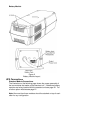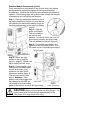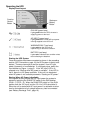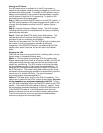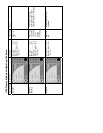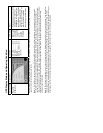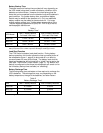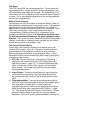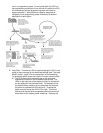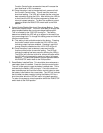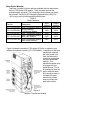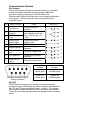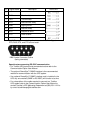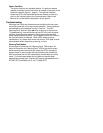Fan Speed
The 1700 Series UPS has variable speed fans. The fan speed will
vary depending on a number of factors. As the load placed on the
UPS increases the fan speed will increase. The temperature of the
environment the UPS is operating in can also cause the fan speed to
increase. (For a more detailed explanation of the variable speed fan
function refer to appendix B)
Battery Check Function
During startup the UPS will perform an automatic 'Battery Check' to
detect whether a problem exists in the battery circuit. If the batteries
pass the test, the unit will start normal operation. If a problem is
detected during the test the “Warning/Fault” LED will activate. Other
LED’s may also activate. If this occurs please refer to the
“Troubleshooting” section on page 22 for a description of the
problem and possible solutions. It is important to note that when
the UPS has detected bad batteries, the battery backup mode is
disabled. The unit will continue to operate and provide clean power;
however, since there is no battery power available, the unit cannot
provide backup power if input power is lost.
The Function Control Button
The function control button is located on the display panel (see
“Display Panel Layout”, page 12). This button is used to perform
several different UPS operations, including initiating a self test,
providing programming options, and silencing the alarm. A brief
description of each function follows along with a step by step guide
to accessing each function.
1) Self-Test. In order to perform a self-test the UPS must be
operating in the normal mode (see “UPS Display Status and
Operating Condition”, page 14). To initiate the self-test simply
press and hold the Function Control button until the audible
alarm sounds. The self-test also performs the same battery
check described above.
2) Alarm Silence. The alarm silence feature is used to stop the
audible alarm from sounding. Any time the audible alarm is
sounding pressing the Function Control button will silence the
alarm.
3) Programming Mode. There are three programming options:
load shed, output enable/disable after input overvoltage backup,
and reset battery installed date. In order to enter the
programming mode the UPS must first be operating in Bypass
mode without faults (see “Stopping the UPS: Option 1”, page
13). Then press and hold the Function Control button. (“Press
and hold” always means to hold until the unit gives audible
feedback). The unit will give an audible feedback indicating the




